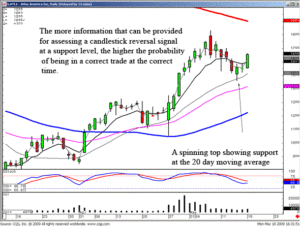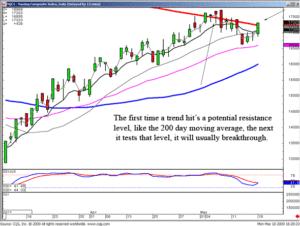Stock Trading Strategy for Day Traders
There are two types of trading strategies that are relevant to day trading that we will discuss today. Leverage and short selling are very common among day traders due to their potential for high returns, however of course with high return comes high risk. It is very important that stock traders have the knowledge, financial means, and discipline required to practice day trading for a living. In fact, it takes some time before many investors are able to day trade successfully, however those that are willing to take the time necessary can be very successful.
One important stock trading strategy that we will discuss is leveraging. Leveraging occurs when an investor borrows money to make more money on his or her trades. When you place a trade with you own, money and then add borrowed money, you have the potential to double your return. Of course the investment risk comes in the event you lose out on a particular trade. Then your losses can double as well. It is a very risky way to trade stock but again, if done carefully can bring great returns.
This stock trading strategy requires the use of a margin account. Buying stocks on margin, also known as margin trading, is how traders actually borrow the money in order to practice leveraging or short selling stocks. A margin account is different from a regular trading account and it requires at initial investment of at least $2,000. Once a trader has a margin account, he or she can borrow up to 50% of the purchase price of a stock. There are requirements of course when buying on margin. For instance the trader must maintain a certain balance in his or her margin account in order to qualify to borrow money.
Another trading strategy that also involves the borrowing of funds is shorting stocks. Shorting is the opposite of investing in stock with the goal that the stock’s value will increase. When selling short, you actually want the value of the stock to decrease! How it works is that the trader first borrows money from a broker for a set number of shares. Then the trader sells the shares, and once the security goes down in price, he buys the shares back. He then returns the set number of shares to the broker at the current (and hopefully cheaper) market price allowing the trader to keep the difference. This is a stock trading strategy that many investors have a hard time understanding however it really is no harder than your typical stock trading.
Continue to explore other trading strategies such as leveraging and short selling and find one that works for you!
NASDAQ
The same analytical tools can be applied to individual stock prices. The more indicators that can be analyzed as acting as support for a candlestick signal, the higher the probability of being in a correct trade at the correct time. Add the factor of a candlestick pattern also forming, that makes the probabilities of the trade being highly profitable all that much greater. The ATLS chart becomes a strong buy when you apply the candlestick signal information on top of the other indicators. After a pullback down through the T. line, a spinning top signal used the 20 day moving average as support. A quick visual analysis confirms the 20 day moving average acting as an influence on the stock price. It can be assumed the 20 day moving average is continuing to act as support and a Jayhook pattern is trying to form. This makes for a very easy entry strategy. A positive open tomorrow would induce entering this trade, using a close below the T. line as a stop.

ATLS
The entry-strategy decision was based upon the confirming indicators making this a strong trade possibility. Investing should not be a difficult process. The more simple the analytical tools, the greater the probability of being in a correct trade. Once a trade direction can be established, the candlestick investor now has a greater array of investment tools to apply to the trade. It can be leveraging the trade on margin or establishing an option trade. Most investors do not have an investment plan. They buy stocks based upon an array of sources. These sources usually are different for each established position. One could be a Jim Cramer recommendation. The next one might be a brother-in-law hot tip. Most established positions have no game plan for exiting the trade. That is what makes candlestick analysis very mechanical. You can buy based upon a candlestick buy signal and sell based upon the appearance of a candlestick sell signal.
Option Traders
The Candlestick Forum option trading training session will be scheduled in the next few weeks. Please keep your calendars open for a weekend boot camp on Option Trading with Candlestick Signals. Whether a beginning option trader or seasoned investor, you will gain valuable insights in how to establish option trades with a dramatically improved entry strategy. The common sense aspects applied to option trading will be the same common sense insights that are found in candlestick analysis. Details of the option trading weekend boot camp will be available on the homepage over the next few days.
Good investing,
The Candlestick Forum Team
Stephen Bigalow’s latest E-Book
Website special reflects current newsletter. If you are reading an archived newsletter you will be directed to Current Website Special

 This Week’s Special
This Week’s Special
Speak Your Mind